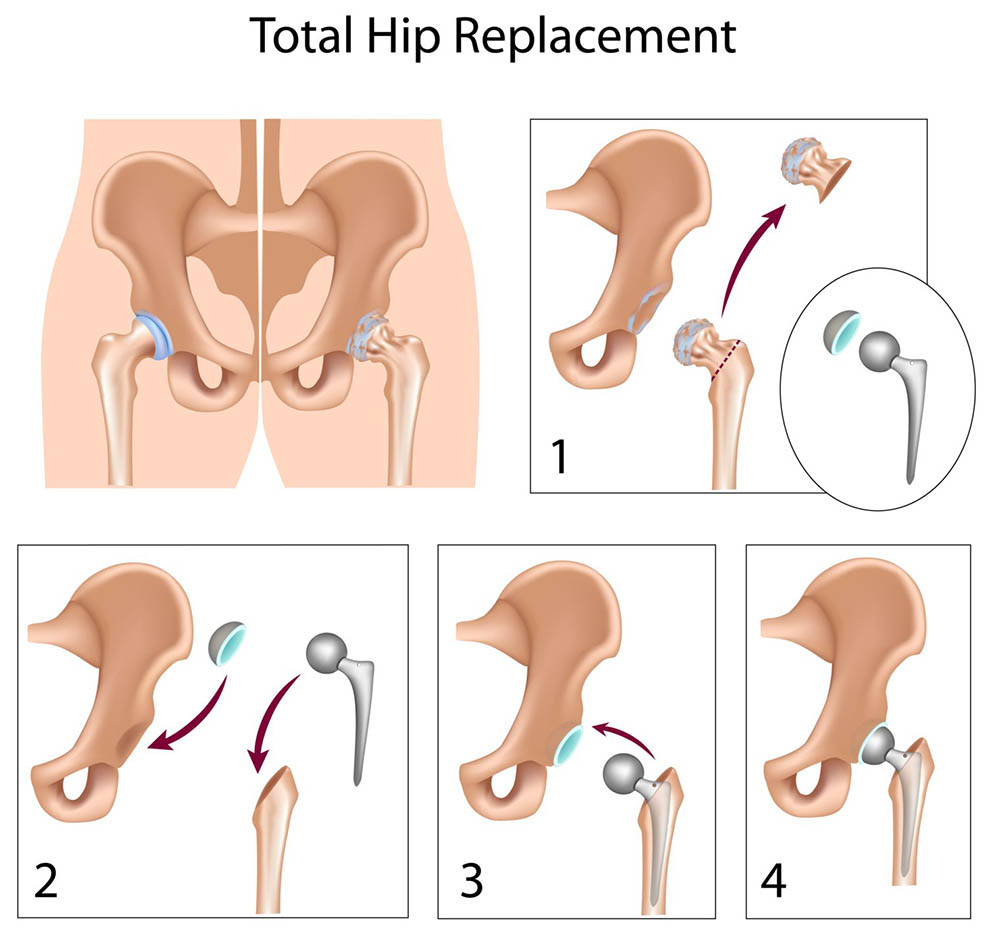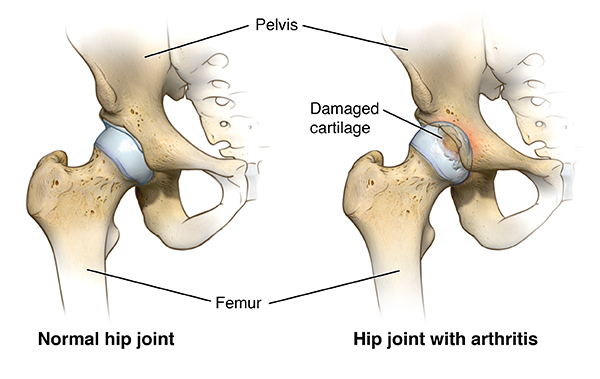
Hip replacement is also called anthroplasty which is a procedure of replacing painful hip joints with artificial joints made of metal and plastic components.
The hip replacement surgery can be performed using standard techniques or minimal invasive procedures which can ease pain, reduce scar and reduce hospitalization.
In a hip replacement surgery, the ball portion is cut and replaced by an artificial joint and attached.
The damaged cartilage is removed and the thighbone is attached with the hipbone.
If there is pain while performing simple daily activities like walking, climbing stairs or restless sleep, we suggest to get an expert opinion.
With further tests, we can suggest medications to ease the pain along with physiotherapy.
If these measures do not relieve the pain and the stifness, hip replacement surgery will be necessary to restore your hips function.

A total hip replacement removes the damaged areas of the bone and is replaced with prosthetic components. The socket is replaced with an artificial cup. The artificial joint is called a prosthesis.
Usually, bone cement is used to fix the prosthesis into the bone. In other cases, a prosthesis is used which allows the bone to grow onto the outer surface of the prosthesis.
Hip joint is exposed using an incision on the back of the hip and over the buttock. Joint is exposed after separating the muscle and cutting through the capsule.
The worn and damaged surface of the bone and cartilage from upper end of femur (thigh bone) and pelvis are removed and shaped to accept the prosthetic implants. These surfaces are replaced with metal and plastic/ceramic implants.
Knee replacement surgery is safe for most people but comes with some risk as in any other surgery.
It’s important to stay connected with us post your surgery through regular visits and checkups as prescribed and needed.
More than 90% of people who have total knee replacement surgery experience a dramatic reduction of knee pain and a significant improvement in the ability to perform common activities of daily living. You can move around with the help of a walker or crutch. Your activities have to be controlled and would need help for the next two months.
As suggested by use and your physio therapist, you need to be active and do exercises and regular activities in moderate levels. Jumping, running, cycling or any activity which can put excess pressure on the joints are best to be avoided. Your healing will depend on multiple factors before you can resume your normal activities, we should be consulted before taking any further steps
Hip replacement surgery is safe for most people but comes with some risk as in any other surgery.
It’s important to stay connected with us post your surgery through regular visits and checkups as prescribed and needed.
It depends on the condition of the joints and tissues around which can be diagnosed through x-rays and other tests. Medication and pain killers will be tried to relive you of the pain but if it doesn’t subside, hip replacement will be the option.
No, age is not a consideration for a hip replacement surgery, only the conditions are.
Doctors instructions have to be followed diligently and utmost precautions have to be taken for you to get back to normal pain free lifestyle. There has to be a gradual and persistent progress in physical activities which might take upto 12 months post-surgery.
The average cost of hip replacement is around Rs.3.5 lakhs & can go upto 6 lakhs depending on multiple factors like method of surgery, implants, replacement kind and hospital stay.
The surgery takes 45-90 mins or more depending on the patients case. The patient needs to stay in the hospital for a day or two during which physiotherapy will begin. Total recovery can take upto 8 – 10 weeks.
Click here to know more about insurance at .